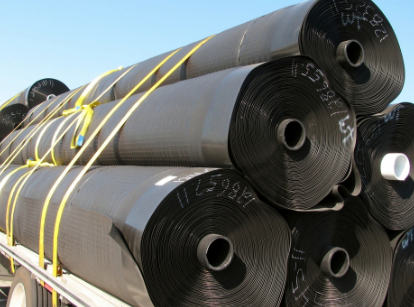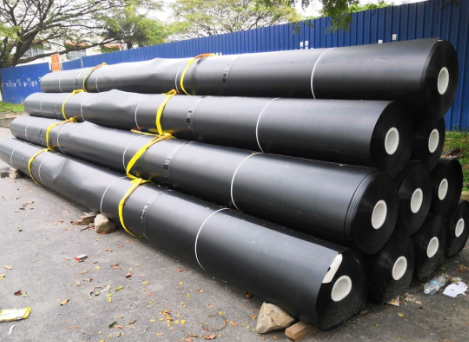- Understanding the Role of Geomembrane Liners in Waste Management
- Innovations in Geomembrane Liners for Water Management
- Geomembrane Liners: A Comprehensive Guide
- The Future of Geomembrane Liners in Civil Engineering
- Geomembrane Liners: Enhancing Landfill Stability
Manager:
WhatsApp:+86 177 0135 2670
Tel:+86 177 0135 2670
Email:marketing@okorder.com
Address:3rd Floor, No.2 Building, No.1 Sanlihe Road
What is the lifespan of HDPE geomembrane?
Geosynthetics, including composite geomembrane and high-density polyethylene geomembrane, have become indispensable components in various engineering applications due to their durability, flexibility, and impermeability. Among these materials, hdpe Geomembrane stands out as one of the most widely used options. But what exactly is the lifespan of HDPE geomembrane, and what factors influence its longevity?

Understanding HDPE Geomembrane
High-density polyethylene (HDPE) geomembrane is a type of synthetic membrane liner manufactured from high-density polyethylene resins. This geomembrane is engineered to offer exceptional resistance to chemicals, UV radiation, and environmental stressors, making it suitable for a wide range of containment applications.
Composite Geomembrane: A Combination of Strengths
Composite geomembrane, on the other hand, is a multilayered material that combines different geosynthetic components to leverage their individual strengths. Typically, a composite geomembrane comprises layers of Geotextiles and geomembranes, with each layer serving a specific function. This combination enhances the overall performance and versatility of the geomembrane in containment applications.
Factors Influencing Lifespan
Several factors influence the lifespan of HDPE geomembrane and composite geomembrane alike. Understanding these factors is crucial for assessing the long-term performance and durability of these materials in various engineering projects.
1. Environmental Conditions
The environmental conditions to which HDPE geomembrane is exposed play a significant role in determining its lifespan. Factors such as temperature fluctuations, UV radiation, chemical exposure, and biological activity can all impact the material's degradation rate. In harsh environments with extreme temperatures or high levels of UV radiation, geomembranes may experience accelerated degradation, potentially reducing their lifespan.
2. Installation Quality
The quality of installation also affects the longevity of HDPE geomembrane and composite geomembrane systems. Proper installation techniques, including surface preparation, seam welding, and anchoring, are essential for ensuring the integrity and performance of the geomembrane liner over time. Poor installation practices can lead to premature failure due to seam defects, wrinkles, or inadequate anchoring, compromising the containment system's effectiveness.
3. Chemical Exposure
Chemical exposure is another critical factor that can influence the lifespan of HDPE geomembrane and composite geomembrane. These materials are commonly used in applications involving containment of hazardous chemicals, industrial waste, or agricultural effluents. Prolonged exposure to aggressive chemicals or solvents can cause degradation, embrittlement, or chemical attack, leading to premature failure of the geomembrane liner.
4. Mechanical Stress
Mechanical stressors such as punctures, tears, or abrasions can compromise the integrity of HDPE geomembrane and composite geomembrane systems. In applications where the geomembrane is subjected to heavy loads, traffic, or dynamic forces, adequate protection measures, such as geotextile cushioning or protective layers, may be required to minimize the risk of mechanical damage and extend the lifespan of the containment system.
5. Design Considerations
The design of the geomembrane containment system also plays a crucial role in determining its lifespan. Factors such as slope stability, drainage, and load distribution must be carefully considered to ensure optimal performance and longevity. Proper design specifications, including thickness requirements, interface friction angles, and anchorage details, are essential for achieving the desired level of containment effectiveness and durability.
6. Maintenance Practices
Regular inspection and maintenance are essential for prolonging the lifespan of HDPE geomembrane and composite geomembrane systems. Periodic monitoring of the containment facility for signs of damage, degradation, or leakage allows for timely repairs or remediation measures to be implemented, preventing potential issues from escalating and ensuring continued containment integrity.

Conclusion
In conclusion, the lifespan of HDPE geomembrane and composite geomembrane systems depends on various factors, including environmental conditions, installation quality, chemical exposure, mechanical stress, design considerations, and maintenance practices. By understanding these factors and implementing appropriate measures to mitigate potential risks, engineers and project stakeholders can optimize the long-term performance and durability of geomembrane containment systems in a wide range of applications."
- Previous:What are the types of geomembranes?
- Next:Is geomembrane permeable?
-
2024-06-13Geomembrane is not plastic cloth






